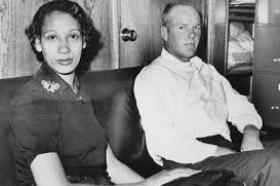Inspired by feminist methodology and participatory action research, CBBG is designed to be responsive to the concentric conversations happening among narrators, interviewers, archivists, and the public programming audience, as well as resonating scholarship, activism, and media. Sady Sullivan shares the strengths and challenges of CBBG's experimental project design and the pleasures of hosting forums where people practice talking about race/ethnicity (and intersecting identities) together.
Learn
Interdisciplinary scholars, artists, and organizers provide context for the oral history collection through multimedia essays, digital exhibits, and lesson plans with new ways to think about race, ethnicity, culture, identity, and U.S. history.
|
Michael J. Rosenfeld |
Ann Morning |
Renee Romano |
All Exhibits
Oral history allows for multiplicity: for the varied, nuanced, and complicated stories of identity and experience to be told, instead of flattened to static racial categories.
By
While adaptation may destroy or change certain aspects of a traditional art form, fusion is also a natural progression that promotes growth and strengthens traditions for a new generation, ensuring its survival.
By
As important as Loving v. Virginia (1967) was, prohibitions on interracial marriage were in fact the last segregation laws to be invalidated. Loving reflected these broader political developments in the arena of race more than it caused them.
Mixed-heritage narratives provide us with the opportunity to teach children from an early age that having a certain skin color, cultural background, or country of origin doesn’t determine a person’s value, despite messages we see in society.
By
Although this historical account of the construction of the race notion in the West is widely accepted, disagreement exists about whether it describes the only instance in which a human society invented a race-like belief.
Stories about Blackness, Americanness, international identities, sexism and dating, memories and memorials of war, going back home, 9/11, changing Brooklyn neighborhoods, Barack Obama, middle school dances and adolescent friendships, and the Brooklyn Dodgers.
How and why racial categories change over time
A sociologist looks at the increasing percentage of marriages in the US, New York City, and Brooklyn that are interracial and describes how social science can provide explanations for -and raise new questions about- the world we live in.













